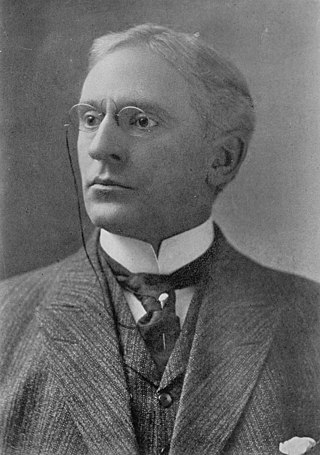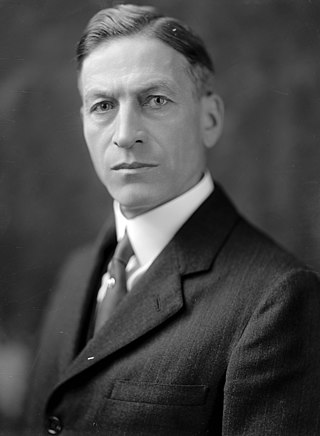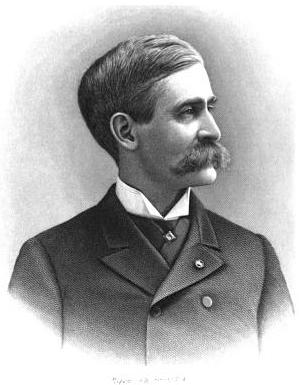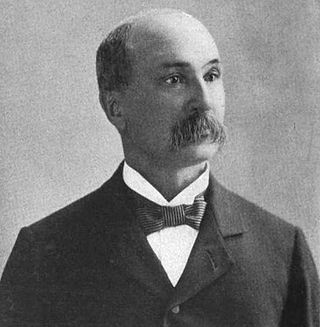
Charles Arnette Towne was an American lawyer and politician who served in both houses of Congress. He represented Minnesota in the U.S. House of Representatives from 1895 to 1897 and in the U.S. Senate from 1900 to 1901. He also represented New York in the U.S. House of Representatives from 1905 to 1907. He was the last Democrat senator from Minnesota, before the state's Democratic Party merged with the Farmer-Labor Party to form the Minnesota Democratic–Farmer–Labor Party.

Jefferson Parish Kidder was an American lawyer and jurist. He served as the non-voting delegate from the Dakota Territory to the United States House of Representatives. Kidder was the only Democratic lieutenant governor of Vermont until John J. Daley in 1965.

Richard Franklin Pettigrew was an American lawyer, surveyor, and land developer. He represented the Dakota Territory in the U.S. Congress and, after the Dakotas were admitted as States, he was the first U.S. Senator from South Dakota.

Rock Creek Cemetery is an 86-acre (350,000 m2) cemetery with a natural and rolling landscape located at Rock Creek Church Road, NW, and Webster Street, NW, off Hawaii Avenue, NE, in the Petworth neighborhood of Washington, D.C., across the street from the historic Soldiers' Home and the Soldiers' Home Cemetery. It also is home to the InterFaith Conference of Metropolitan Washington.

Robert Jackson Gamble was an American politician who served as a U.S. Representative and Senator from South Dakota. He was the father of Ralph A. Gamble and brother of John Rankin Gamble, members of South Dakota's prominent Gamble family.

Coe Isaac Crawford was an American attorney and politician from South Dakota. He served as the sixth Governor and as a U.S. Senator.

Harlan John Bushfield was an American politician from South Dakota. He served as the 16th governor of South Dakota and as a United States senator.

Ole Juulson Kvale was a Lutheran minister and U.S. Representative from Minnesota.

Eugene McLanahan Wilson was an American lawyer and Democratic politician who served in various legal and political offices in Minnesota including as a member of Congress and as the fifth and seventh mayor of Minneapolis.

John Louis MacDonald was a United States representative from Minnesota and a member of the Democratic Party.

Thomas Cale was a delegate to the United States House of Representatives from the District of Alaska. He was born in Underhill, Vermont, in Chittenden County. He attended the district schools and Bell Academy at Underhill Flats. In 1866, he moved to Fort Edward, New York, in Washington County. He taught school in Underhill Center, Vermont, in 1867 and 1868.

Philo Hall was a South Dakota attorney and politician. He served as Attorney General of South Dakota and a member of the United States House of Representatives.

Halvor Steenerson was an American Republican politician who served as a member of the United States House of Representatives from Minnesota's 9th congressional district from 1903 to 1923.

Freeman Tulley Knowles was a veteran of the American Civil War, lawyer, journalist and social activist. From 1897 to 1899, he served one term in the United States House of Representatives as a Populist.

John Mandt Nelson was a U.S. Representative from Wisconsin, serving nine terms in Congress between 1913 and 1933.

Charles Emlen Bell (1858–1932), often known as C.E. Bell, was an American architect of Council Bluffs, Iowa and Minneapolis, Minnesota. He worked alone and in partnership with John H. Kent and Menno S. Detweiler. He also worked as part of Bell, Tyrie and Chapman. A number of his works are listed on the U.S. National Register of Historic Places.

Melvin Grigsby was an American attorney, politician, and military leader from South Dakota. A Union Army veteran of the American Civil War, Grigsby was most notable for his service as South Dakota Attorney General and an organizer and commander of the 3rd United States Volunteer Cavalry Regiment during the Spanish–American War.

Byron S. Payne was an American attorney and politician from South Dakota. A Republican, he was best known for his service as the state's attorney general from 1919 to 1923.

Merritt Horace Day, sometimes called Col. M.H. Day, was an early pioneer, rancher, mine owner, and legislator in the Dakota Territory. Merritt Day was a "pronounced advocate for the division of Dakota," into the separate U.S. states of North Dakota and South Dakota, and Day County, South Dakota, is named in his honor. Day was commander of an irregular state militia in South Dakota during the Ghost Dance War. During the lead-up to what is now known as the Wounded Knee Massacre, "Col. Day" was issued hundreds of rifles and thousands of rounds of ammunition by the state governor, which he distributed to the 60 to 200 men of the Spring Creek Volunteers. These civilians are estimated to have killed between 12 and 18 Lakota in mid-December 1890, "kinsmen, brothers, or sons of the Lakota seeking refuge on Stronghold."




















